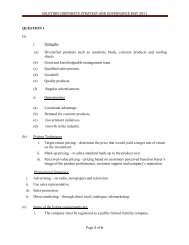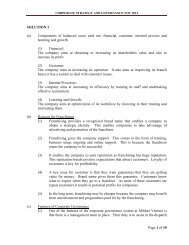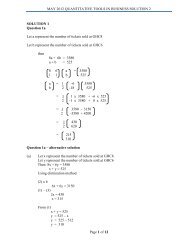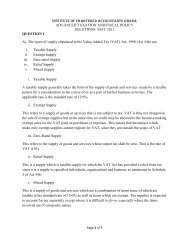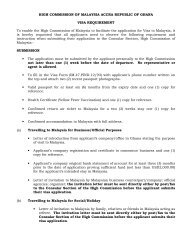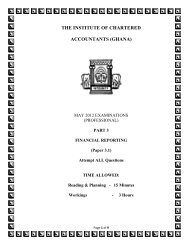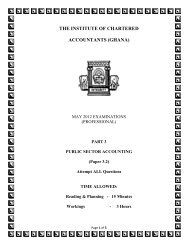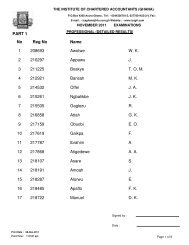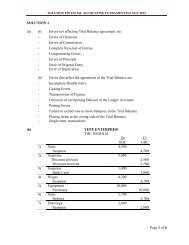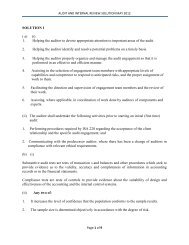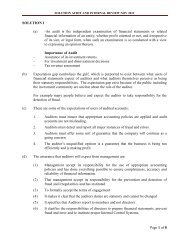(IFRS) for Small and Medium-sized Entities (SMEs)
(IFRS) for Small and Medium-sized Entities (SMEs)
(IFRS) for Small and Medium-sized Entities (SMEs)
You also want an ePaper? Increase the reach of your titles
YUMPU automatically turns print PDFs into web optimized ePapers that Google loves.
<strong>IFRS</strong> FOR SMES – JULY 2009Recognition—profit-sharing <strong>and</strong> bonus plans28.8 An entity shall recognise the expected cost of profit-sharing <strong>and</strong> bonus paymentsonly when:(a)(b)the entity has a present legal or constructive obligation to make suchpayments as a result of past events (this means that the entity has norealistic alternative but to make the payments), <strong>and</strong>a reliable estimate of the obligation can be made.Post-employment benefits: distinction between definedcontribution plans <strong>and</strong> defined benefit plans28.9 Post-employment benefits include, <strong>for</strong> example:(a)(b)retirement benefits, such as pensions, <strong>and</strong>other post-employment benefits, such as post-employment life insurance<strong>and</strong> post-employment medical care.Arrangements whereby an entity provides post-employment benefits arepost-employment benefit plans. An entity shall apply this section to all sucharrangements whether or not they involve the establishment of a separate entityto receive contributions <strong>and</strong> to pay benefits. In some cases, these arrangementsare imposed by law rather than by action of the entity. In some cases, thesearrangements arise from actions of the entity even in the absence of a <strong>for</strong>mal,documented plan.28.10 Post-employment benefit plans are classified as either defined contribution plansor defined benefit plans, depending on their principal terms <strong>and</strong> conditions.(a)(b)Defined contribution plans are post-employment benefit plans underwhich an entity pays fixed contributions into a separate entity (a fund) <strong>and</strong>has no legal or constructive obligation to pay further contributions or tomake direct benefit payments to employees if the fund does not holdsufficient assets to pay all employee benefits relating to employee service inthe current <strong>and</strong> prior periods. Thus, the amount of the post-employmentbenefits received by the employee is determined by the amount ofcontributions paid by an entity (<strong>and</strong> perhaps also the employee) to apost-employment benefit plan or to an insurer, together with investmentreturns arising from the contributions.Defined benefit plans are post-employment benefit plans other th<strong>and</strong>efined contribution plans. Under defined benefit plans, the entity’sobligation is to provide the agreed benefits to current <strong>and</strong> <strong>for</strong>meremployees, <strong>and</strong> actuarial risk (that benefits will cost more or less thanexpected) <strong>and</strong> investment risk (that returns on assets set aside to fund thebenefits will differ from expectations) are borne, in substance, by theentity. If actuarial or investment experience is worse than expected, theentity’s obligation may be increased, <strong>and</strong> vice versa if actuarial orinvestment experience is better than expected.168 © IASCF



